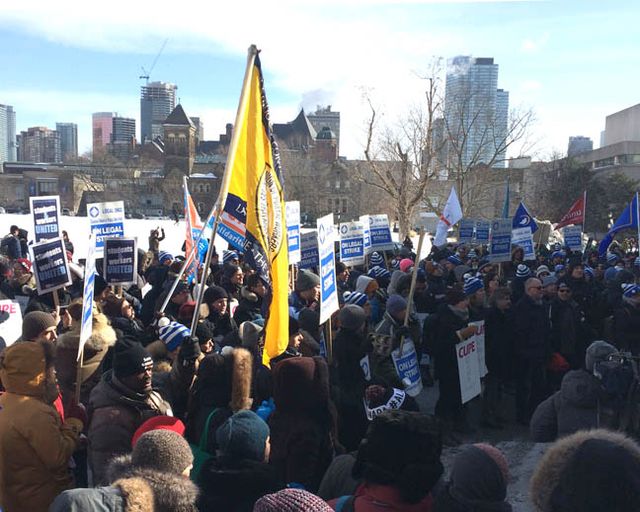David Brown
The United Steelworkers’ (USW) and US oil refiners are resuming talks on Monday as the strike of oil workers enters its sixth week. These negotiations have taken on a ceremonial character as Shell, the lead negotiator for the oil refiners, stated its intention last week of using strikebreakers to run its Deer Park, Texas refinery at full capacity during the strike.
The USW, for its part, is continuing to limit the extent of the strike. So far, the union has called out on strike workers at 12 different facilities, limiting the walkout to just 6,550 of the 30,000 oil workers it represents.
Reporters with the World Socialist Web Site recently spoke with workers on the picket lines at the Tesoro Golden Eagle refinery in Martinez, CA who expressed increasing frustration with the union leadership.
Pickets at the refinery have dwindled over the course of the strike. Workers estimate that of the 425 USW members at the plant about only about 80 to 90 carry out picketing and the union has made no effort to mobilize its members or other workers. The union has not provided any strike pay and only recently began giving the strikers limited benefits which many workers find degrading.
“They’re giving us gift cards of around $100 a week for groceries if you’re picketing,” said one worker with nine years experience at the Golden Eagle refinery. “If you want them to help with some of your bills you have to bring them to a committee which decides if you need the help. It’s demeaning having to go to a meeting, hat-in-hand, begging the union for money that we’ve been paying into the strike fund for years.
“What about all the workers who paid their union dues and retired without ever taking part in a strike? Where’d all that money go?”
The USW is currently sitting on a “strike fund” of $350 million and continues to collect dues from all their refinery workers who aren’t on strike. The USW has worked hard to keep its membership demobilized and uninformed about negotiations.
The same worker described the way the union treats them. “They don’t answer our e-mails or phone calls either and we don’t get a lot of data from them. They’ve rejected seven contracts but we don’t know what’s in them or what’s been put on the table. Big unions are like big companies. They sit down at the table with some CEO and neither of them has ever worked in the trenches.
“I don’t know why they’ve only called out a few refineries. It’s a good question. It seems like they’re calling out places like ours where the refinery was already shut down for maintenance.”
The Golden Eagle refinery was scheduled for routine maintenance at the beginning of the strike and was chosen as part of the USW’s strategy of limiting the impact of the strike on corporate profits. The USW had no response to Shell’s plans to run its Texas refinery at full production using scab labor other than to say they hope “Shell will approach these discussions with an open mind as well.”
Criff, a board operator with 16 years’ experience expressed fears over Tesoro’s plans for the Martinez refinery. “After 16 years of working with these managers, I can say they are going to try to start this refinery back up while we’re on strike. If they do, we’re all going to take a day off from picketing. There’s no time as dangerous as when they’re just starting up a unit and you don’t want to be anywhere near here if something goes wrong.
“I’m a clever guy, but even after all this time working here, I’m rusty when I come back from vacation. If they’re using inexperienced people that’s just dangerous.”
Another worker mentioned that it takes eight months to get the most basic certification. “It took me four years to get fully certified and five years after that I knew 10 times as much. They can’t run an entire place with scabs. Some of these refineries are in the middle of cities and that could get really dangerous.”
The growing ineffectiveness of the strike is causing concern even among local union officials. One member of the USW Local 5 committee told the World Socialist Web Site “I’ve been telling the other guys on the committee, and the guy from the international ‘When are you going to pull the trigger?’ If the companies get more time to train them we’ll end up pulling the other refineries on strike just to see the replacement workers sent in.”
The union leadership has no opposition to the use of strikebreakers. The fundamental plan of USW president Leo Gerard is to keep the strike ineffective until the rank-and-file members are worn out and demoralized before implementing another concessions contract.
WSWS reporters also spoke to workers at the picket line at the BP refinery in Whiting, Indiana. One picketer denounced the USW’s limiting of the strike. “The heads of the unions are like politicians the higher up you go. If it were up to me, a national strike would have really hurt the oil corporations.”





